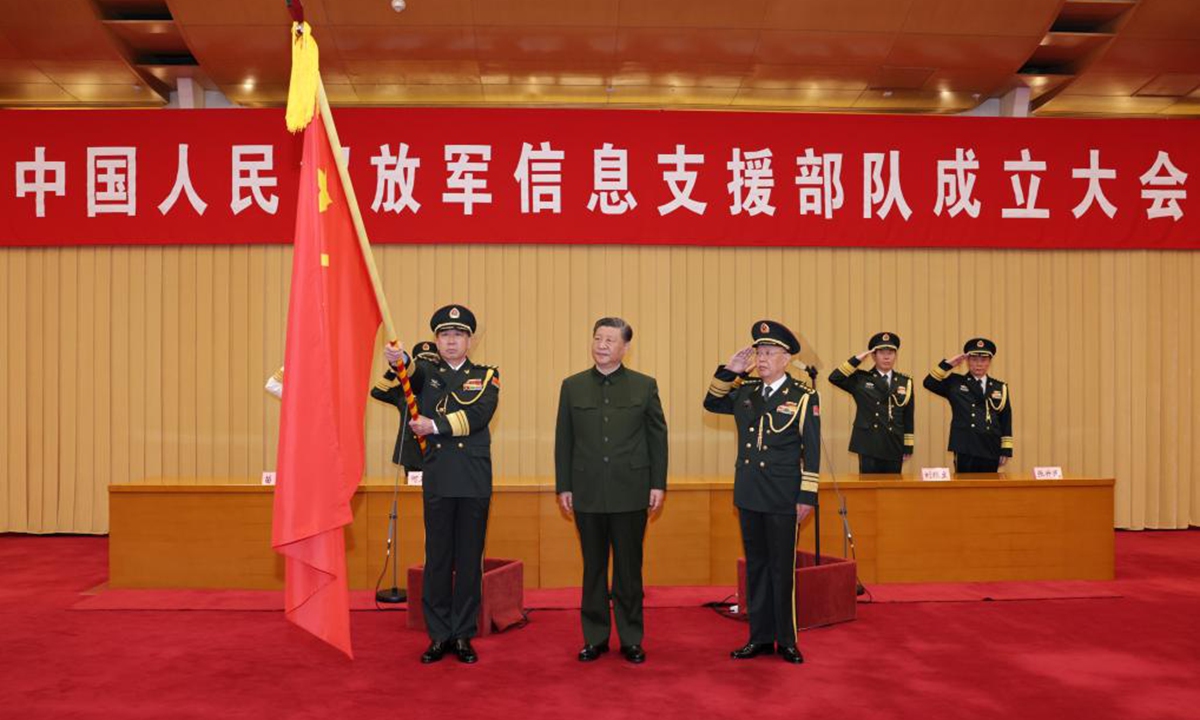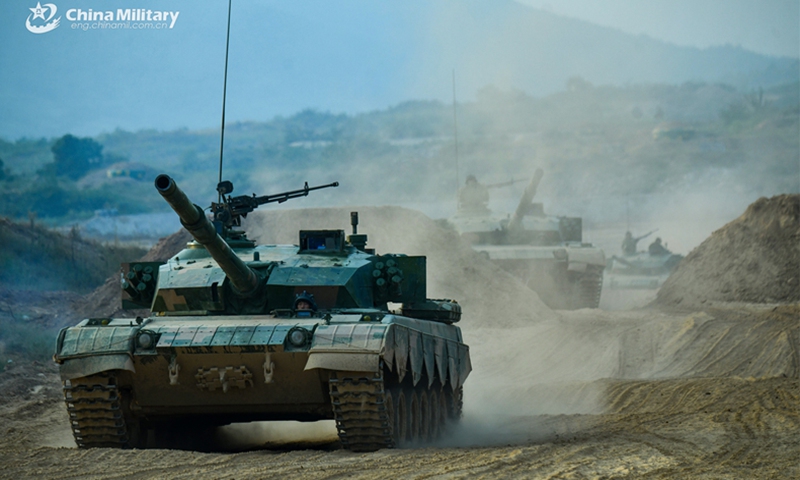China has unveiled new independent units within the People’s Liberation Army (PLA), marking its most sweeping restructuring in nearly a decade. The move sees the dissolution of the old Strategic Support Force, replaced with three new arms dedicated to information, space, and cyber operations.
The newly established Information Support Force, one of the three arms, assumes responsibility for a wide array of tasks, including gathering and analyzing information, constructing communication networks, and safeguarding critical systems.
The PLA now comprises four branches – ground, navy, air, and rocket – along with four arms, including information, aerospace, cyber, and joint logistics support.
Chinese President Xi Jinping noted the crucial role of the Information Support Force, stating it “bears a great responsibility for advancing the military’s high level of development and winning a modern war.”
The force’s leadership will be overseen by Lt. Gen. Bi Yi, whose extensive military career includes serving as deputy commander of the PLA Ground Force.

Chinese Defense Ministry spokesman Wu Qian said that the cyberspace force is crucial for reinforcing national cyber border defenses, countering network intrusions, and maintaining information security.
Under this reorganization, the aerospace and cyber units, previously under the Strategic Support Force, will now function in parallel with the newly established Information Support Force. The aerospace unit will focus on improving China’s space capabilities and managing space crises.
This overhaul comes amid escalating tensions between China and the United States, with cyberwarfare emerging as a key battleground for global influence. The US, UK, and New Zealand recently accused China of sponsoring malicious cyber activities targeting democratic institutions.
According to a commentary published in state-owned Global Times, the restructuring reflects a recognition that modern warfare is a confrontation between systems, where those who can seize the information advantage hold the initiative.
According to the Global Times, “The establishment of the Information Support Force will enhance the joint combat capability and all-domain operational capability of the Chinese military based on the network information system.”
It further added that this action will contribute to accomplishing the “centennial goals” set forth during the PLA’s establishment and expedite the process of transitioning it into “a world-class military force.”
What’s Behind This Extensive Overhaul?
This restructuring comes on the heels of China’s assertive stance in territorial disputes and its increasing military prowess.
The last major overhaul of the PLA occurred in 2015 under Xi’s leadership. It consolidated critical functions such as logistics, training, and mobilization under the direct command of the Central Military Commission (CMC), the highest Chinese defense organization, which heads the PLA.
Additionally, cyber, information, and space forces were combined under the Strategic Support Force (SSF), aiming to streamline command structures.
However, recent developments suggest a reversal of this consolidation. Experts in the Chinese military note that incidents like the US shooting down a Chinese surveillance balloon, corruption investigations within the military leadership, and a lack of synergy within the SSF divisions have prompted a reconsideration of this structure.
In response, smaller reorganizations have been experimented with in recent years, indicating that the 2015 reforms were not deemed complete.

The emphasis now appears to be on direct control by the top leadership, eliminating layers of command to ensure swift decision-making, particularly in wartime scenarios.
The latest restructuring introduces three new arms, believed to be directly under the control of the CMC. This move underscores President Xi’s effort to centralize command and enhance the PLA’s efficiency and effectiveness.
The report to the 20th National Congress of the Communist Party of China emphasized the importance of coordinated construction and utilization of the network information system.
With network information technology identified as a crucial factor in bolstering combat capability, the newly established Information Support Force is positioned to play a pivotal role in the high-quality development of the Chinese military and its readiness for modern warfare.
The Strategic Support Unit alone was limited in its ability to handle all aspects of information, space, and cyber operations. The reorganization “is likely intended to make each arm independent and increase its level of specialization,” the source said.
Conversely, according to Chinese media, the latest initiative reflects China’s endeavor to accelerate innovation and advancement, establish a network information system customized for modern warfare requirements, highlight distinct features of the Chinese military, and propel rapid enhancement of the system’s combat effectiveness based on superior quality.
- Contact the author at ashishmichel(at)gmail.com
- Follow EurAsian Times on Google News




